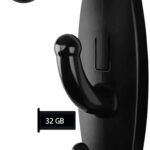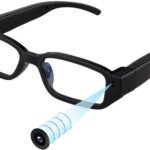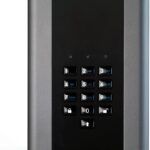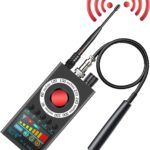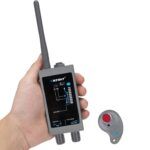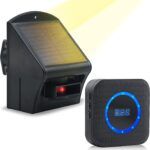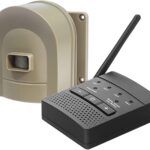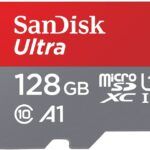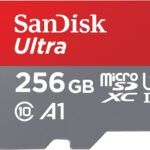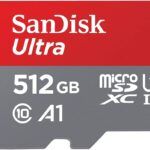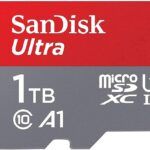Cameras can store video footage in a number of different ways. Most customers prefer data storage on SD card or remote streaming to a different device.
Our goal is always to provide our customers with multiple product options, which is why you can filter every hidden camera we reviewed based on video storage options. These include:
Data storage overview
Let’s take a look at the pros and cons of each data storage type.
SD Card
Storing data on an SD card is often the best and most convenient way. SD cards are fairly inexpensive and capacities can go over 1TB, allowing days or even weeks of recorded footage. Downside of using SD cards for storage is that some camera models will need to be plugged into a PC or phone to review and download footage.
Find hidden cameras with SD card storage or Buy SD cards
Remote streaming
Remote streaming means your hidden camera will capture footage and stream it to another device, typically via a WiFi connection. This doesn’t necessarily mean you need an internet connection, as many cameras can connect directly to your home router. Some can even act as an Access Point (AP) to which other devices can directly connect. But, you will need an active internet connection if you wish to view footage from your phone while you are elsewhere.
Find hidden cams with remote stream
Cloud storage
Cloud storage will store video footage on a remote server. You can typically access your footage at any time and from anywhere this way. It depends on each camera, but cloud storage is typically limited and may require an active monthly subscription.
Find hidden cameras with cloud storage
Internal disk
There aren’t too many cameras on the market with an internal drive. This often means it includes a non-removable SD card, rather than an ordinary hard disk you’d find in a computer.
Find hidden cameras with internal disk drives
What storage type should I choose?
We always recommend carefully reviewing and understanding your specific needs and use cases, and choosing a hidden camera accordingly.
Do you need to record someone snooping around your office desk while you’re out at lunch? Do you require constant surveillance of your pets at home while you’re away? Do you need to catch your neighbor rummaging through your backyard at night?
SD card storage is a great idea if you don’t need live notifications and only want to review footage later for evidence or peace of mind. Alternatively, a wi-fi enabled hidden camera that can stream live video is a good option when you want to keep an eye on your pets or babysitter while away from home.
Cloud storage is best if you’re worried your camera might get discovered and your footage destroyed or deleted. Continuously saving data on the cloud means you can access it at any time and from any location. This can be a good idea if capturing evidence is of utmost importance.
We prefer a combo: WiFi + SD Card
For our surveillance needs we found that a combination of WiFi streaming and SD card storage is the best of both worlds. Your data is saved on your spy camera continuously, and wifi still enables you to view recordings or live stream at any time.
A hidden camera with this combo, and additional features such as motion detection + mobile phone notifications + photo capture makes for a powerful surveillance tool that can give you constant peace of mind. You will get live alerts for movement, and assuming your spy camera is appropriately disguised, your SD card and data should be perfectly safe.
Watch out for this!
- It may not always be convenient to connect your spy cam to your tablet or PC to delete old footage. If you choose a camera with SD card storage, try to make sure it has loop recording. This feature will overwrite the oldest files on the card, thus ensuring you never run out of space for new recordings.
- WiFi can give your hidden camera away! If someone tech-savvy has access to your modem they may notice a strange device connected and using bandwidth.
- It’s rare but some cameras will not properly work with SD cards of 256GB or higher capacity. Read in-depth product descriptions after clicking the “Buy Product” links on each individual product to find out if this is the case.
Data Storage FAQs
- How much storage space does my camera need?
Hidden camera data storage required is different for each product. There are different resolutions and video compression formats which can significantly impact the duration of footage you can record. Furthermore you should take camera battery life into the equation as well. On a portable hidden camera with less than 2 hour battery life, it may not always make sense to have an SD card that stores more than 2 hours of video footage.
Check your camera specifications to learn which compression method it uses, then use our Video storage calculator tool to estimate how much disk space you require for your particular needs.
- What are most common compression formats used for surveillance cameras?
- H.264: This is the most commonly used compression format for surveillance cameras due to its efficiency in compressing video while maintaining good image quality.
- H.265: Also known as HEVC (High-Efficiency Video Coding), this compression format is a newer version of H.264 and provides better compression while maintaining high-quality video.
- MJPEG: This compression format stands for Motion JPEG and is used primarily for high-resolution video surveillance cameras. It compresses each frame of the video individually, which results in large file sizes.
- MPEG-4: This compression format is also used in spy cameras and offers a good balance between file size and image quality.
- Can you record footage on a PC or phone remotely?
If your camera supports WiFi streaming to a remote device you can simply set up recording software on your PC, tablet or phone to record all streamed footage. Most cameras don’t come with dedicated software for this, but there are plenty of free programs and apps which will allow you to record on-screen footage.
An added benefit of recording on a computer is increased processing power, allowing you to use more advanced compression algorithms and save storage space.
- What is the difference between lossless and lossy compression?
Compression is a technique that reduces the size of a digital file by eliminating redundant or unnecessary information. Two types of compression are commonly used: lossless and lossy.
Lossless compression is a type of data compression that allows the original data to be reconstructed perfectly from the compressed data. In other words, no data is lost during compression, and the file size is reduced without affecting the quality of the original data. Lossless compression is often used for text, data, and graphics files.
On the other hand, lossy compression is a type of data compression that reduces the size of a file by permanently eliminating some of the data. The amount of data eliminated is based on algorithms that remove the least essential data first. As a result, the quality of the data is affected, and it cannot be reconstructed to the original quality. Lossy compression is often used for multimedia files such as images, audio, and video files, where small losses in quality are acceptable in exchange for smaller file sizes.
- What is the best compression codec for storing video footage?
There is no single “best” compression codec for storing video footage, as the ideal codec depends on a variety of factors including the intended use of the footage, the available storage space, and the desired balance between file size and image quality. Some commonly used codecs for video compression include H.264, H.265, and MPEG-4, all of which use lossy compression to achieve smaller file sizes at the expense of some image quality.
As such, the best compression codec for storing video footage depends on various factors, such as the desired video quality, available storage space, and playback requirements.
H.264 is a widely used codec that offers good video quality with efficient compression. It is suitable for most applications and is supported by most modern devices and software. H.265 is a newer codec that offers improved compression and better video quality than H.264, but it requires more processing power to encode and decode. MPEG-4 is another popular codec that provides good compression and quality for streaming applications.
- What is the impact of resolution on storage space requirements?
The impact of resolution on storage space requirements is significant. Higher resolution videos, such as 4K or 8K, require more storage space compared to lower resolution videos, such as 720p or 1080p. This is because higher resolution videos have more pixels, which means more information needs to be stored. For example, a 1080p video has 2.25 times fewer pixels compared to a 4K video, and thus requires 2.25 times less storage space. For a more accurate assessment use our Storage calculator and Resolutions calculator tools.
It’s important to consider the storage requirements when choosing the resolution of your video footage. Higher resolution videos may provide better image quality, but they also require more storage space, which can become expensive and impractical in certain situations. It’s recommended to balance the desired resolution with the available storage capacity and cost considerations.
- What is the difference between H.264 and H.265 compression?
H.264 and H.265, also known as MPEG-4 AVC and HEVC (High-Efficiency Video Coding), respectively, are two popular video compression standards used to reduce the file size of videos. H.265 is the successor to H.264 and is designed to provide better video quality at lower bit rates compared to its predecessor. This is accomplished by using more advanced compression techniques, such as larger block sizes, better motion compensation, and improved prediction algorithms.
One of the main benefits of H.265 over H.264 is that it requires less storage space while maintaining the same level of video quality. This is particularly useful for high-resolution videos, as they require more storage space due to their larger file sizes. However, H.265 requires more processing power to encode and decode videos, which can be a limitation for small hidden cameras. Ultimately, the choice between H.264 and H.265 compression will depend on the specific requirements of the project, such as available storage space, desired video quality, and available hardware resources.
- How does the bitrate affect storage space requirements?
The bitrate of a video refers to the amount of data being processed per second. It determines the level of detail and quality of the video, as well as the resulting storage space requirements. The higher the bitrate, the more data will be stored per second of video, resulting in higher quality video but also requiring more storage space.
When dealing with storage space limitations, it is often necessary to balance the desired quality of the video with the available storage space. Reducing the bitrate can reduce storage space requirements, but at the cost of video quality. On the other hand, increasing the bitrate will result in higher quality video, but at the expense of greater storage space requirements. It is important to find the optimal balance between the two factors to ensure that the video quality is satisfactory while still being able to store a reasonable amount of footage.
- What is the difference between compression format and compression codec?
Compression format and compression codec are related concepts, but they are not the same thing. The compression format refers to the general method of compressing data, while the compression codec is the specific software algorithm that is used to implement that method.
For example, the MP4 format is a compression format that uses a variety of codecs to compress video and audio data. Codecs like H.264 and H.265 are specific algorithms that are used within the MP4 format to compress video data. Different codecs within the same format can have different levels of compression and performance, so choosing the right codec can have a significant impact on the resulting file size and quality.
- How do Frames per Second affect surveillance camera data storage?
Frames per second (FPS) refers to the number of images that a surveillance camera captures every second. The higher the FPS, the more detailed and smoother the video will appear, but this also increases the amount of data that needs to be stored. The higher the FPS, the more storage space is required to store the footage. For example, if a camera is set to record at 30 FPS, it will produce twice the amount of data than if it was set to record at 15 FPS.
However, the optimal FPS for a surveillance camera depends on the specific application and the level of detail required. In areas with high traffic, it may be necessary to capture footage at a higher FPS to ensure that every detail is captured, while in low traffic areas, lower FPS may be sufficient to capture the necessary information without overloading the storage capacity.
- What other factors affect video footage file size?
The storage calculator tool we provide can merely estimate the amount of storage space your camera will require. Besides resolution, frame rate and compression, here are other factors that affect video file size for security camera footage:
- Bitrate: Higher bitrates result in larger file sizes.
- Length of Recording: Longer recordings take up more space.
- Motion Detection: Motion detection can reduce the amount of footage captured, reducing the overall file size.
- Day/Night Mode: Night vision mode can result in larger file sizes due to the need for infrared lighting.
- Number of Cameras: The more cameras that are recording, the larger the storage space required.
- Audio Recording: Recording sound can increase the file size.
- Compression Format: Different compression formats have varying file sizes.
- Camera Type: Different camera types can have different file sizes, depending on their features and capabilities.
- Environmental Factors: Factors such as weather, lighting conditions, and background movement can affect the amount of data captured and therefore the file size.
How much storage space do I need per 1 minute of footage?
The average amount of file size for one minute of video footage in 1080p can vary depending on the compression format used. Here are the estimated average file sizes for one minute of video footage in 1080p using different compression methods, and common camera settings:
- H.264 – This is one of the most commonly used compression formats for surveillance cameras. For 1080p video footage, the average file size for one minute of video is around 28MB.
- H.265 – This compression format is known for its ability to compress video files while maintaining high quality. For 1080p video footage, the average file size for one minute of video is around 18MB.
- MPEG-4 – This is another commonly used compression format for surveillance cameras. For 1080p video footage, the average file size for one minute of video is around 52MB.
- MJPEG – This compression format is less commonly used for surveillance cameras. For 1080p video footage, the average file size for one minute of video is around 350MB.
It’s important to note that these file sizes are estimates and can vary depending on several factors, such as the quality of the video recording, the amount of motion in the video, and the specific settings used for compression, among other things.







